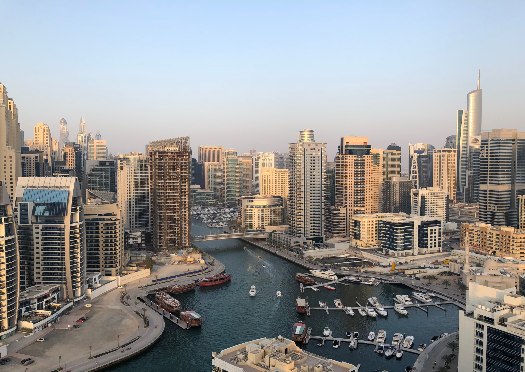Effective Business Communication in the Middle East
In a region as diverse as the Middle East, your business communication approach cannot be a one-size-fits-all solution. A thorough understanding of the culture, context and regional differences is essential to successfully communicating and doing business in this market.
While the Middle East is a vast and diverse region, there are some common characteristics as well as do’s and don’ts when it comes to business communication, which could help you in your plans to enter the Middle Eastern market and create an effective content strategy. Here are just a few pointers:
1. Business is personal
In the Arab world, people do business with people, not with brands or companies. Business is relationship driven and is based on mutual trust. There is much less of a divide between personal and professional life in the Arab world, and therefore relationship building and face to face communication is key. What you might experience as small talk or an informal introductory conversation is for an Arab often a targeted business conversation to explore business potential and collaboration opportunities.
2. Time is not of the essence
Another thing to note, when it comes to business communication in the Middle East, is that the concept of time might be different to what you’re used to. Meetings don’t necessarily take place during conventional business hours, and you need to be willing to invest time to build relationships, preferably face to face. Showing impatience may reflect poorly on your character and intentions, so be prepared to be flexible and accommodating to shifting plans and schedules.
3. Mind your language
The key to successful business communication in the Middle East is toning down content that could potentially cause offence. Religious and political references should be cautiously considered when planning your content strategy. This applies to both words and images. You can get away with communicating in English in most parts of the Middle East, but you will reach a much wider audience by also creating content in Arabic. A language of hyperbole, Arabic is ambiguous, implicit and emotionally rich and you will need translation services as well as insights by local experts to advise you on ways to tailor your business communications.
4. Wasta
This brings us to Wasta or “it’s not WHAT you know but WHO you know”. Having a professional contact in the region is imperative to becoming successful in your communications. You will save time and money as well as avoid missteps and exasperation by liaising with a local partner who has already put in the long-term work of establishing personal relationships in the corporate world and the media. So, partner up.
5. Media relations
As with any other industry in the Middle East, media is also about personal relations. Truthfully, a press release distributed impersonally to a hundred publications will not get much traction. Your time is better spent pitching specific content, leadership articles or opinion editorials to individual titles in alignment with editorial calendars. The probability of getting press coverage is much higher if the Editor knows you and trusts that you can adapt your key messages into insightful, reader-relevant content with a strong angle.
6. The youth bulge
The Middle East is experiencing a youth bulge, with 41% of the region’s population aged between 15 and 39 years old. That’s about 207.7 million young people and future customers to whom communication should be tailored. They are switched on, informed, tech savvy and opinionated. Storytelling matters but only if it’s authentic, so content has to be crafted with care to ensure it resonates. This audience is getting ever more cynical too and will hold your brand to account if you get it wrong and miss the zeitgeist of the time.
7. Social media
The combination of a large young demographic and unprecedented smartphone penetration in the Middle East means that social media should absolutely be part of your channel mix. Social media campaigns can have a very wide reach and strong impact with high levels of interaction and engagement, if done well. Be aware of the diverse cultures across the region when choosing social media channels, words and images and consider liaising with an expert in local culture, content and trends.
8. Localize your approach
When deciding on your communication strategy for this region, the worst mistake you can make would be to stereotype or assume the same things will work for the entire region. It will not. Your target audiences vary greatly from country to country, in demographic make- up, culture and wealth as well as in religion, language and interests. So, do you research, get personal, be patient, mind your language, align your content, include the youth, get on social and partner up for that vital dose of Wasta.
In conclusion, it may seem daunting to communicate effectively in the Middle East but with the right knowledge, awareness and understanding, this region provides a myriad of very exciting and rewarding business opportunities. As an agency in Dubai specialized in strategic PR and business communication in the Middle East, we have witnessed our clients reap the rewards of this rapidly growing, dynamic and progressive region in a multitude of ways. Based on our experience, we strongly recommend that you partner up with a local agency that has its finger on the pulse, ear to the ground, and feet firmly in the region.
By Cristina Kristensen, Director of Communications







 +971 4 455 8499
+971 4 455 8499

